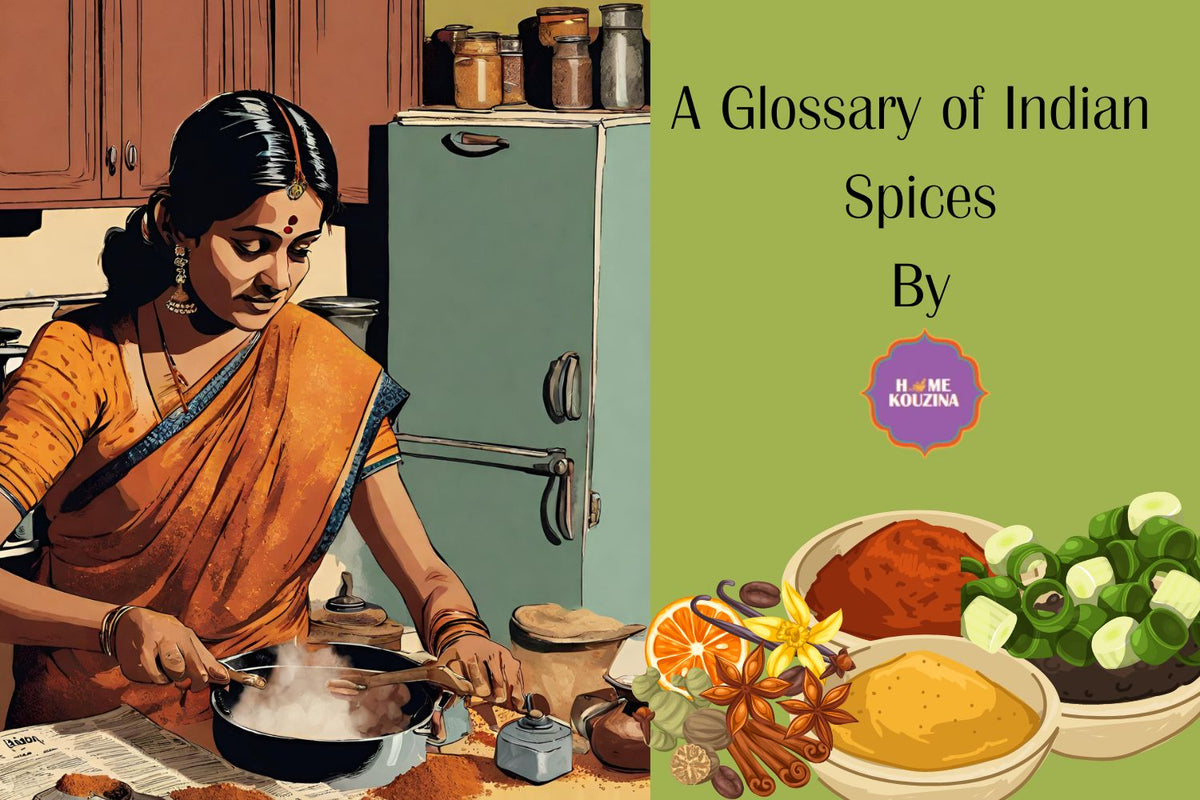
A Glossary of Indian Spices
|
|
Time to read 5 min

|
|
Time to read 5 min
Remember the 2005 movie - Mistress of Spices? For those who are still uninitiated or were perhaps too young to remember the movie - here’s a gist. The Aishwarya Rai starrer movie is about ‘Tilottama’, an orphan who has acquired a deep knowledge about the benefits of the Indian spices and their effects on people. She runs a small store in Oakland California where she stocks all her paraphernalia. Throughout the movie, Tilottama deciphers her customers' innate troubles and without pressing on the matters directly she offers them solutions through the magical spices. The movie was an adaptation of Chitra Divakaruni’s 1997 book, a bestseller that focused on the mystique of feminine energy and nature’s miracles. The use of spices as detox agents, mood stabilizers and cures for ailments of the mind, body, heart and soul are now backed by scientific studies as well. Out of the world of fiction and facts, Indian spices and herbs were revered as naturopathic agents that helped prevent and in some cases treat and cure in the Charaka Samhita ( An ancient ayurvedic text). It’s been almost 20 years since the movie was released and 2000 years since the Ayurvedic text was written. The allure and mystery of the spices found scientific backing due to recent research. Turmeric has become synonymous with a cleanser, Ashwagandha is widely accepted as a mood booster and every Indian and Asian household knows the benefits of the sesame seeds. There is more to the Indian spices than meets the eye.
Each of these Indian spices have a distinguished flavor profile, a very distinctive taste and myriad uses that we have listed here for you.Read on and find the spices of your interest here in an alphabetical Order :
Flavor Profile: Aromatic, slightly bitter, with hints of menthol.
Taste: Earthy, herbal.
Uses: Adds depth to soups, stews, rice dishes, sauces, and marinades.
Flavor Profile: Sharp, pungent, with a hint of heat.
Taste: Strong, spicy.
Uses: Used in tempering, pickling, spice blends, and vegetable dishes.
Flavor Profile: Spicy, pungent, with earthy undertones.
Taste: Sharp, biting.
Uses: Used in nearly all savory dishes, spice blends, marinades, and salads.
Flavor Profile: Sweet, floral, with hints of citrus and mint.
Taste: Sweet, slightly spicy.
Uses: Used in both sweet and savory dishes, including desserts, chai tea, and rice dishes.
Flavor Profile: Sweet, warm, with a hint of spice.
Taste: Sweet, woody.
Uses: Adds flavor to desserts, curries, rice dishes, and beverages.
Flavor Profile: Strong, pungent, with hints of sweetness and bitterness.
Taste: Strong, spicy.
Uses: Essential in spice blends, marinades, rice dishes, and desserts.
Flavor Profile: Citrusy, slightly sweet, with a hint of earthiness.
Taste: Warm, nutty.
Uses: Ground coriander seeds are used in curries, soups, and marinades.
Flavor Profile: Warm, slightly nutty, with a hint of citrus.
Taste: Earthy, aromatic.
Uses: Essential in Indian curries, rice dishes, and spice blends like garam masala.
Flavor Profile: Aromatic, slightly bitter, with citrus undertones.
Taste: Fragrant, slightly bitter.
Uses: Tempering, curries, rice dishes, and chutneys.
Flavor Profile: Sweet, licorice-like, with a hint of bitterness.
Taste: Sweet, aromatic.
Uses: After-meal digestive, in spice blends, teas, and desserts.
Flavor Profile: Bitter, nutty, with a hint of maple.
Taste: Bitter, slightly nutty.
Flavor Profile: Warm, aromatic, with a blend of spices.
Taste: Complex, spicy.
Uses: Adds depth to curries, stews, rice dishes, and roasted meats.
Flavor Profile: Spicy, pungent, with a hint of sweetness.
Taste: Spicy, warming.
Uses: Fresh or ground in curries, soups, teas, and desserts.
Flavor profile : sweet, hints of aniseed and molasses
Taste : woody and sweet, licorice is a bark.
Uses :added as a natural sweetener to teas and used as a soothing ingredient in natural cough syrups.
Home Kouzina Masala with Licorice
Flavor profile : Sharp, Pungent, citrus and peppery
Taste : Warm complex chili taste
Uses : Used to make spice blends and for medicinal mixes
Home Kouzina Masala with Long Pepper
Flavor Profile : a mildly spicy and aromatic essence.
Taste :slightly sweet, and peppery taste
Uses : In aromatic dishes and as a blended ingredient in five spice powder.
Flavor Profile : pungent, sharp, slightly bitter
Taste: tangy, with a subtle bitterness
Uses: As a tempering in most Indian dishes, pickling
Flavor Profile: Bitter, pungent, with onion-like undertones.
Taste: Bitter, peppery.
Flavor Profile: Nutty, slightly sweet, with a faint bitterness.
Taste: Nutty, slightly bitter.
Uses: Breads, pastries, desserts & creamy textured curries
Flavor Profile: Floral, honey-like, with a hint of bitterness.
Taste: Fragrant, slightly bitter.
Uses: Flavoring agent in sweets, rice dishes, milk, and desserts.
Flavor Profile : Sesame Seeds have a bland creamy flavor.
Taste : Nutty and buttery
Uses : An oil seed and a tempering
Flavor Profile: Licorice-like, sweet, with hints of spice.
Taste: Sweet, aromatic.
Uses: Essential in biryanis, curries, soups, desserts, and beverages.
Flavor profile : Earthy Woody and Smoky flavor
Taste : subtle sweet and bitter taste
Flavor profile : slightly sweet and coarse in texture
Taste : Bland with hint of sweetness and fibrous
Use : As a thickening agent and a body coolant
Flavor Profile: Earthy, slightly bitter, with a hint of mustard.
Taste: Earthy, slightly peppery.
India is such a diverse country with such a wide variety of cuisines and condiments that this glossary just keeps on expanding. Write to us at ask@homekouzina.com about any interesting herb or spice that you are using currently and how they have enhanced your cooking, kitchen and life in general.
